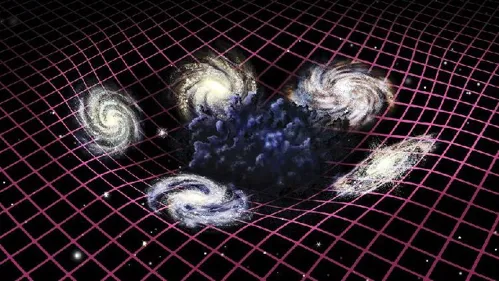Researchers Unveil New Method to Detect Low Mass Dark Matter

An international team, led by researchers from MIT and the University of Zurich, has made significant strides in the quest to detect low-mass dark matter, utilizing innovative photon detectors to enhance detection capabilities.
According to a statement released by the Hebrew University of Jerusalem, the new methodology represents a promising advance in low-mass dark matter detection.
Dark matter is notoriously difficult to detect due to its lack of interaction with electromagnetic forces, rendering it invisible to conventional observational techniques. Unlike visible matter such as stars and planets, dark matter neither emits, reflects, nor absorbs light.
The research effort, conducted as part of the QROCODILE experiment, or Quantum Resolution-Optimized Cryogenic Observatory for Dark matter Incident at Low Energy, focuses on the design of superconducting nanowire single-photon detectors. These advanced detectors are engineered to serve a dual function: they not only engage with dark matter but also function as sensors to detect energy produced in dark matter collisions.
Notably, the detector can achieve cooling to a temperature just 0.1 degrees above absolute zero, the theoretical limit where atomic and molecular motion reaches its minimum energy state, approximately 273.15 degrees Celsius below zero.
Researchers revealed that within the superconducting state, electrons form pairs known as Cooper pairs. If a dark matter particle transfers a small amount of energy that disrupts the Cooper pairs in the nanowires, it produces a noticeable disturbance that can be measured as an electrical pulse.
Due to the minuscule energy required to break a Cooper pair, the detector is capable of probing potential low-mass dark matter candidates—an important advancement in dark matter research, according to the team.
Currently in its early stages, the detector has been proven feasible but has not yet been employed in active dark matter searches.
The system underwent a 400-hour test run, achieving an exceptionally low energy threshold for dark matter detection while establishing new behavioral limits for light dark matter particles.
Looking ahead, the research team aims to boost the detector's sensitivity and plans to relocate the experiment to an underground laboratory to diminish background noise. Additionally, development is already underway for a larger follow-up experiment, named NILE QROCODILE, which is set to expand on these findings.
Read These Next

Streetlight Charging: Revolutionizing EVs
A Pennsylvania State University research team has successfully converted streetlights into electric vehicle charging stations, providing a cheaper and more effective alternative to traditional installations while considering urban equity.

AI Surge in Venture Capital: A Game Changer
Analysis of the recent PitchBook report indicating a historic investment surge in AI startups within the venture capital sector, exceeding half of total funding.

China Aims to Accelerate Green Transition in All Sectors
China plans to speed up its green economy transition with investments in technology and eco-friendly practices to combat pollution.
